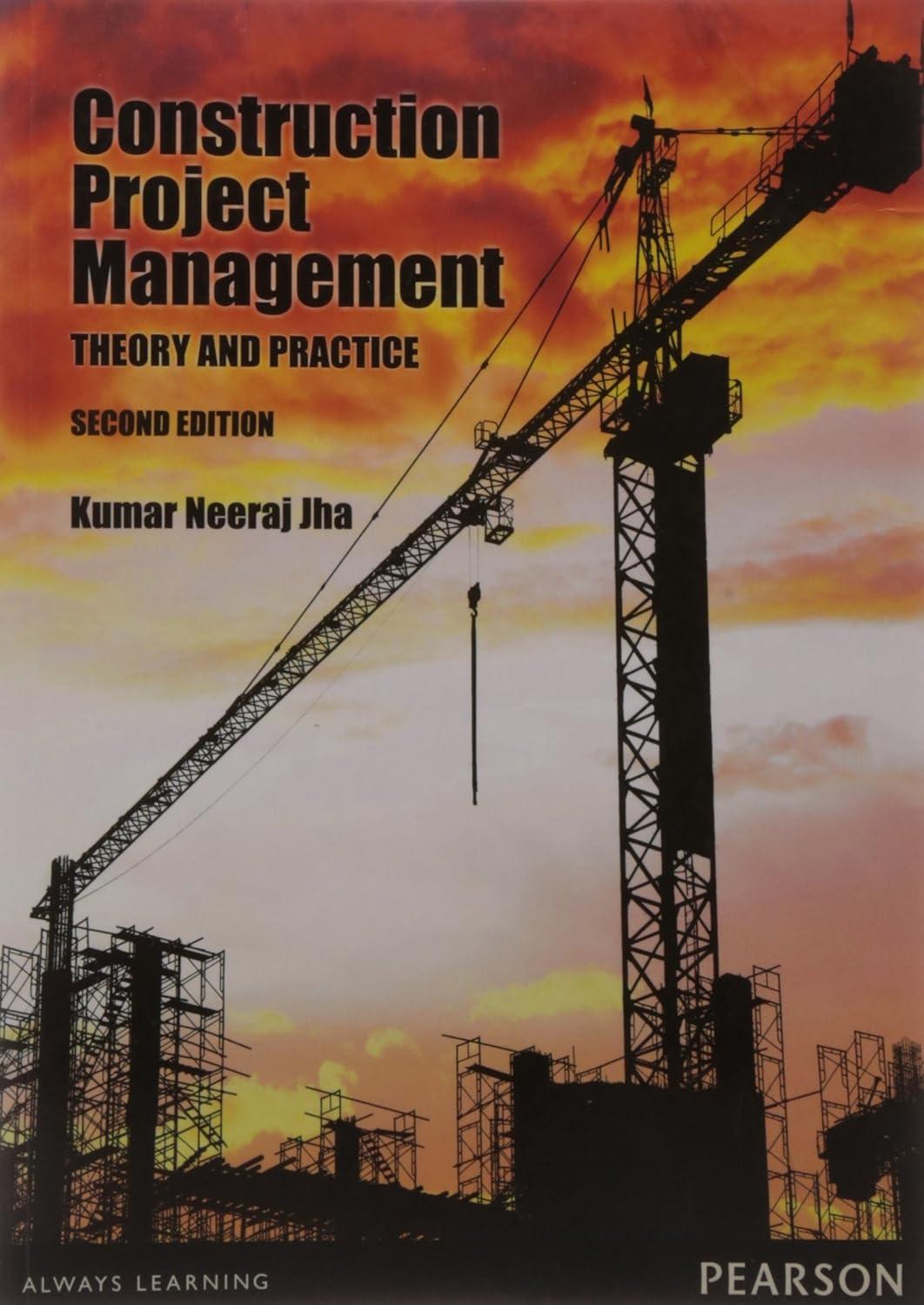S hort-answer type questions a. What is WBS? How is this helpful in planning, monitoring and controlling
Question:
S hort-answer type questions
a. What is WBS? How is this helpful in planning, monitoring and controlling the programme of projects?
b. Describe the process of drawing a Gantt chart for project schedule. What are the advantages and limitations of Gantt charts?
c. How is the estimation of time duration of an activity different in PERT and CPM approaches?
Under what situations are these approaches more suitable?
d. Differentiate between CPM and PERT models for project scheduling.
e. What is meant by line-of-balance technique, and what are its specific uses and advantages in project planning? Illustrate your answer with a suitable example.
f. What do you understand by a dummy activity in an AOA network? In which situations does it become necessary to add a dummy activity in a network? Illustrate with suitable examples.
g. Differentiate and compare between ‘activity on arrow’ network diagrams and ‘activity on node’
network diagrams.
h. What are the different steps involved in finding the probability of completing a project in the desired duration under certainty, using PERT approach?
i. Enumerate the advantages of using the AON network instead of the AOA network.
j. Explain the reasons for the need to develop the PERT methodology for scheduling and monitoring of projects. What is the process of review adopted in PERT?
k. Define ‘critical path’ in a CPM network.
l. How do you ensure timely completion of a project using CPM?
m. Does the critical path, once identified, remain the same till completion of project? If not, what are the reasons for its change?
n. What do you understand by the terms ‘total float’ and ‘free float’ in project schedule?
o. How are the floats useful in effective management of projects?
p. What do you understand by the ‘three time estimates’ method for network scheduling? Illustrate your answer by giving the appropriate formulae and the circumstances under which it is adopted.
q. What is the probability of completing the project within the total scheduled time calculated on the basis of ‘three time estimate’ method?
r. What are the advantages of the precedence network over the conventional ‘arrow diagram’
network representation for project schedules?
s. How do you indicate ‘delays’ and ‘overlaps’ between related activities?
t. Activity ‘A’ has estimated a duration of 18 days as a predecessor to activity ‘B’, which has an estimated duration of 25 days. Calculate the ‘earliest start’ for activity ‘B’ if the relationship between the two is:
i. FF 1 14 days ii. SS 1 10 days iii. FS 2 7 days iv. S F 1 32 days v. FS 1 9 days
Step by Step Answer:

Construction Project Management Theory And Practices
ISBN: 9789332542013
2nd Edition
Authors: Kumar Neeraj Jha






